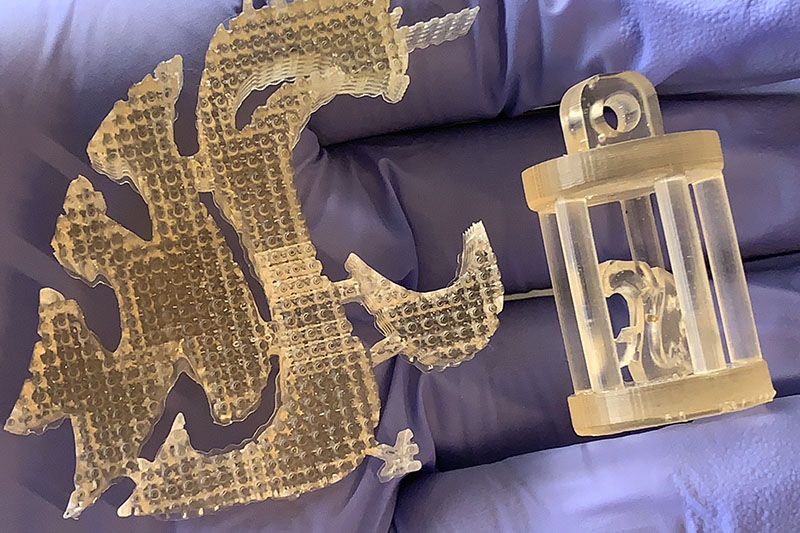Upcycling waste PLA plastic
A chemical catalyst-free technique to convert waste polylactic acid (PLA) plastic into a resin suitable for 3D printing is being proposed by scientists in the US.

The team at Washington State University notes that around 300,000t of PLA is manufactured annually worldwide, with consumer demand growing.
Researchers from Professor Jinwen Zhang’s group claim to have converted the difficult-to-recycle material into a high-quality resin, by resolving several production challenges.
Yu-Chung Chang, a Postdoctoral Researcher at the University, notes that there is currently no standard or widely implemented system to recycle PLA in the US.
He says, 'PLA simply does not degrade rapidly in most conditions – it takes extended time, raised temperature and humidity. Being involved in the fields of 3D printing and chemical recycling of plastics, we were well positioned to see a material whose use is skyrocketing and whose environmental risks are underestimated due to the ‘biodegradable’ moniker. We want to make sure we use and deal with these materials responsibly.
'3D-printing [PLA] waste is un-labelled and consumer disposables are labelled number 7, lumped in with a wide variety of plastics that, when brought to a recycling facility, are not sufficiently separated to make new materials,' he explains.
'Even if they are separated, they have to go through mechanical shredding and melt processing that continuously degrade the plastic through thermal degradation…and mechanisms that make the polymer chains shorter.'
To divert this waste from landfill, the team proposes a novel way of depolymerisation. PLA has many ester linkages in its molecules and ester groups are susceptible to aminolysis, which is 'where an amine prefers to trade away a hydrogen to a segment of polymer to get next to a carbonyl', explains Chang.
'These amines act like scissors chopping the chain up until it is virtually all in little pieces. Imagine though, that you are trying to cut a whole stack of paper with scissors. This is what degrading plastics can be like. They like to stick together and prevent chemicals getting in.'
In response to this challenge, the team has selected an amine and created conditions that effectively separate ‘the paper sheets’ so they can be cut up. By using ethanolamine in a simple and low-cost process, they have opened the polymer structure up at 100°C.
Once the PLA is broken down, they rebuild the plastic and created a photo-curable liquid resin by taking the monomer diol obtained from the aminolysis process. This diol contains two alcohol groups, but as Chang explains, neither can cure on exposure to ultra-violet (UV) light.
By performing a simple reaction with an anhydride, the team has produced a material with two double bonds. Importantly, this means they have a product that is both liquid and UV-curable, he notes. The entire chemical process can be completed in about two days.
The photo-curable liquid resin is commonly used as printing ink and when it is cured into plastic pieces, the product is reported to demonstrate equal or better mechanical and thermal properties than commercially available resins.
'Like any commercial 3D-printing resin, it flows and solidifies on exposure to UV light thanks to its high concentration of double bonds,' adds Chang.
'We have tested a variety of formulations and found that our material has exceptional strength and thermal resistance – thanks to how densely packed its crosslinks are and due to the high density of polar groups acting like additional bonds.'
Regular atmospheric pressure and a temperature of around 100°C are said to be sufficient to rapidly depolymerise the PLA entirely, 'suggesting this will be an inexpensive and safe process to implement at a large-scale since there will be no need for specialised equipment', Chang asserts.
The University has filed a provisional patent and Chang says they are now optimising the process.







